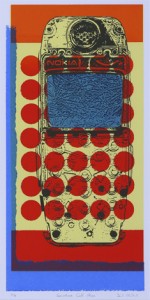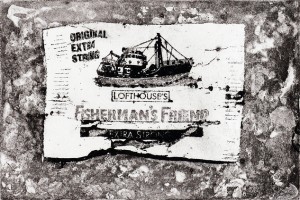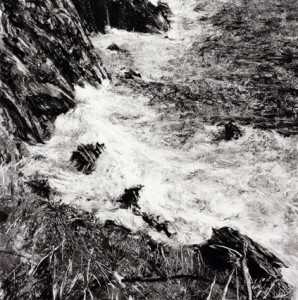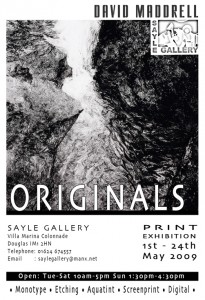Screenprinting
Tuesday, April 28th, 2009Screenprints are made using stencils applied to stretched mesh screens, through which ink is squeegeed onto the paper. Colours are built up layer upon layer to produce a print of bold graphic effect.
Stencils can be made very simply using paper. Elaborate photographic images can also be used to create stencils. In this case a photo emulsion coating is applied to the mesh and left to dry. The screen is then exposed to UV. Where the black lines of the art work block the UV the areas are uncured and can then be washed away leaving a stencil to print through.
The techniques I use can be found in the book ‘Screenprinting, The complete water-based system’ by Robert Adam and Carol Robertson.
The book ‘Waterbased Screenprinting’ by Steve Hoskins is also very useful.
‘Sea Shore Cell Phone’ Limited edition 1/14.
This very battered Nokia has lost its number cover revealing the rubber pads beneath. The circular microphone area at the top has a very retro walkie-talkie feel. A good find on a trip to the beach.
The colours were printed using paper stencils, whilst the phone was a photographic image transferred to the screen using photo emulsion techniques and a UV lightbox.
The same image printed onto glass can be found in the Contemporary Glass section via the ‘Gallery’ area.
This image was printed in reverse on the back of the glass so when viewed through the glass it would read the right way around. The ink used was a vitreous pigment mixed with a screen printing medium. Using a glass kiln the ink was fired into the glass. In the way the image is sunk just below the surface, making it indelible, it is similar to a tattoo.



